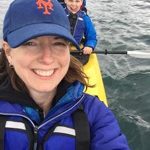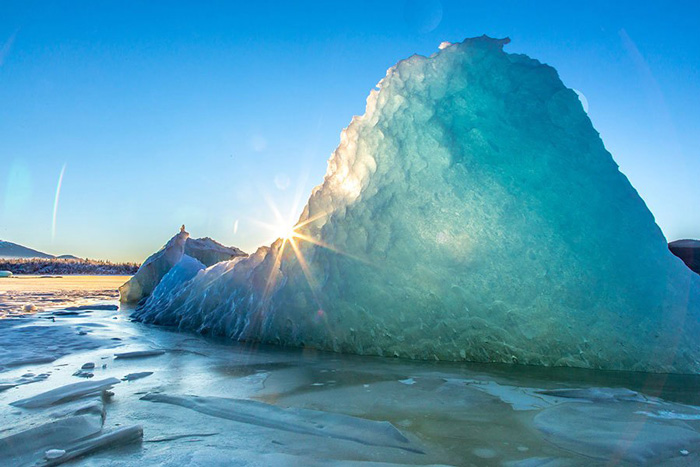This post is part of the Early Career Scientist Policy Subcommittee’s series on science policy fellowships.

Tara Borland
The Alaska Sea Grant State Fellowship Program is an opportunity for recent graduate students to spend a year working at a state or federal agency in Alaska on projects at the intersection of marine science and policy. Fellows are matched with agencies such as the National Oceanic and Atmospheric Agency (NOAA) or the United States Geological Survey (USGS), where they pursue impactful projects ranging from drafting fisheries regulations to monitoring beluga whales.
I spoke with Tara Borland, Program Manager of Alaska Sea Grant, about the application and selection process and the types of projects that fellows take on.
What makes for a successful application?
We’re mostly looking for people who either have strong backgrounds in policy or marine science. It’s nice to have a wide pool of backgrounds to draw from. We gravitate towards folks who are interested in multiple options for their career and are open to any of the positions that we have available. The fellow might end up in Juneau, Anchorage, or Fairbanks, so we like to see that potential candidates are willing to live in any of these locations. We’re looking for strong candidates who’ve done well in school, who have a good work record, good references, and in their personal statement show some passion for being a part of this fellowship.
Q: How many applications are received each year?
This year, we had 25 applications—that’s our largest pool ever. We interviewed ten candidates and out of those, we had six finalists. Each potential candidate tells us which agencies they rate the highest. Using their ranking and background, we decide where they’re going to interview. We like to have each agency interview multiple candidates and each candidate interview at multiple agencies. After all the interviews are done, the fellows reevaluate their rankings. Nine times out of ten, they change, because candidates get a better feel for what each position offers. We also have the agencies rank the candidates that they met. From those two ranking systems, we find the best possible matches and then start offering the fellowships to candidates.
Q: Do you provide financial support for fellows to relocate?
It’s mostly their responsibility. Alaska Sea Grant provides some fellowship funds, but most of it comes from the agency in which the fellow is placed. In each budget, there’s $3,000 for travel. It’s up to the agency whether they’re going to need all of that money for the fellow to travel to different locations or whether they can use some of it to relocate.
Q: How many of the applicants already live in Alaska?
When we first started the fellowship program, it was only open to Alaskan students and residents. In our third year, we decided to open it up to other students throughout the country because we wanted to broaden our candidate pool. Of our current fellows, three of them are from out of state.
Q: What are some projects that fellows have taken on?
This is a marine policy fellowship, so it’s a blend between marine science and policy. A lot of the positions involve quite a bit of both because the science will drive the policy in the end. We have fellows every year that are in NOAA positions. This year we also have fellows with Alaska Fisheries Science Center (AFSC), the North Pacific Research Board, the Alaska Ocean Observing System, and the USGS. Our current AFSC fellow is doing a genetics project on juvenile chum, as well as an Arctic ecosystem monitoring project. Her first week on her fellowship, she went out on a research vessel to collect samples. Another fellow is working with the Office of the Lieutenant Governor in the climate adaptation group. A fellow with the North Pacific Fisheries Management Council is reading through fisheries regulations and guidelines and helping write new regulations. Another fellow is working with volunteers on a beluga whale monitoring project.
Q: How does this fellowship prepare fellows to transition into policy careers?
One of the great things our fellowships offer is the networking and the connections that fellows can make. They’re going to meetings, working with professionals, and being interviewed by the media. It’s not an entry-level job or an internship where they’re just doing busy work. They’re actually working on meaningful projects, and they’re treated as professionals. They get to be a part of the team.
We also require a professional development plan from each fellow. It’s something that they create with the agency when they start. They update it after six months and then at the end. It has their personal goals, career goals, what the agency’s goals were for this fellowship, and then shows how they progress, how those goals have changed, and what goals they’ve met. We found that a lot of our fellows are recruited directly out of this fellowship either into the same agency or into a different job working on a similar project.
Q: How do alumni interact with current fellows?
We do monthly or bimonthly teleconference calls with the cohort of fellows around the state and we talk about what everybody has been up to and any questions they might have. I have had previous fellows join us on some of those calls. The new fellows coming in can talk to some of the ones finishing up. They meet up with each other, and because they’re connected with similar agencies, they also bump into each other when they’re at meetings.
Q: What are some of the alumni doing now?
One of the fellows was with the North Pacific Fisheries Management Council and is now working with the Bristol Bay Native Corporation on fisheries quotas. One had a NOAA fellowship and now is managing fisheries with the Alaska Department of Fish and Game. Another was working with the national parks and has remained with them as an employee. One of our current fellows is working with the North Pacific Fisheries Management Council, and they are trying to hire her immediately. This is all about providing opportunity and bringing great folks to Alaska and retaining them to work here.
About the author:
 Emily Lescak is co-chair of the Early Career Scientist Policy Committee and a postdoctoral fellow at the University of Alaska Anchorage. Her goal is to increase diversity and inclusion in the sciences while pursuing a career focused on science education and outreach.
Emily Lescak is co-chair of the Early Career Scientist Policy Committee and a postdoctoral fellow at the University of Alaska Anchorage. Her goal is to increase diversity and inclusion in the sciences while pursuing a career focused on science education and outreach.































